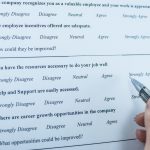
Unsatisfied customers just want their problems solved.
In a perfect world we could create stellar experiences for our customers every single time they interact with us. Unfortunately, mistakes happen. Humans are not perfect and are often times left unsatisfied. Whether mistakes are small or large, they can be costly. Each year in America, businesses lose $41 billion due to poor customer service. The same study also found that after a customer has a negative experience with an organization, 58% of American’s would never use that company again.
“Organizational teams are not siloed. One bad experience with a team member can have consequences for others. Anger elevates negative experiences to even higher levels of dissatisfaction.”
-Janet Pilcher
Can organizations really afford to lose customers and revenue due to poor service? Is there a better way to retain customers who have a poor customer service experience?
5 Steps to Excellent Service Recovery
- Take ownership (as the person who provided subpar service or as the leader of a team)
- Gain incident-specific feedback
- Let the customer know how you will use that feedback to help improve your team
- Let the customer know the changes you will make to keep the incident from occurring again
- Recognize someone that customers identify as offering great service
Service Recovery DO’s
“As leaders, we help our company, the company brand, and most of all our employees when we shift the responsibility from the employee to leaders when recovering from poor service.”
-Janet Pilcher
- Sincerely apologize
- Be genuinely interested in satisfying the customer
- Probe to get to the root cause of the problem
- Always thank the customer for taking the time to provide feedback for improvements
- Practice empathy
- Own it – take full responsibility for the complaint
- Empower front-line employees to solve problems the moment customers report an issue
- If the complaint takes time to resolve, continue to update the customer until it’s settled
- Be transparent – let the customer know what steps you will take to support them and then do it
- Personalize the solution for each customer
- Close the feedback loop – let customers know what changes you will make to prevent the incident from happening again
Service Recovery DON’TS
“Offering more services with customers makes us feel better, not the customer.”
-Janet Pilcher
- React emotionally to feedback
- Approach service recovery by offering “free stuff” or additional services
- Ignore a complaint – virtual or in-person
- Interrupt a customer
- Blame the customer, another employee, the organization, or anyone else
- Try to minimize or downplay the customer’s problem
- Focus on vague complaints – find constructive details to harvest improvements from
- Lie to the customer
Avoid Making the Situation Worse
Not only do customers occasionally experience service below their satisfaction, but when they try to resolve their problems, they tend to run into more. Consumer Reports National Research Center conducted a study that revealed 90% of Americans who have dealt with customer service during the past year think it is frequently frustrating.
If you’re wondering what frustrates people the most, their answers are in the table below:
|
Issue | Percentage of Respondents |
| Can’t get a human on the phone | 75 |
| Salesperson is rude or condescending | 75 |
| Disconnected | 74 |
| Disconnected and unable to reach same rep | 71 |
| Transferred to representative who can’t help or is wrong | 70 |
| Company doesn’t provide—or hides—customer service phone number | 68 |
| Long wait on hold | 66 |
| Many phone steps needed | 66 |
| Repeatedly asked for same information | 66 |
| Proposed solution was useless | 65 |
| Salesperson ignored me | 64 |
| Unsure whether on hold or disconnected | 62 |
| Can’t speak with a supervisor | 62 |
| Phone menu doesn’t offer needed option | 61 |
| Voice-recognition system works poorly | 61 |
| Sales pitch for unrelated goods or services | 60 |
| Salesperson is too pushy | 60 |
Excellent Service Recovery Means Every Person’s Experience Counts Every Time
Despite hardwired systems, mistakes can still be made. Therefore, it is vital to have a good service recovery process in place. While deciding what to include in a service recovery process, consider the customer frustrations above. How can your process limit those frustrations from occurring?
“When customers share their story, they’re not just sharing pain points. They’re actually teaching you how to make your product, service, and business better.”
-Kristin Smaby, Being Human is Good Business
Demonstrate the value of listening to all team members to inspire a culture of service. Negative feedback is a priceless growth opportunity. As a result, we should be truly grateful to continuously improve the customer experience for those who work for us and with us.
For more information on service recovery listen to the Accelerate Your Performance podcast episodes #26 Service Recovery That Knocks it Out of the Park and #27 Every Person, Every Time.

